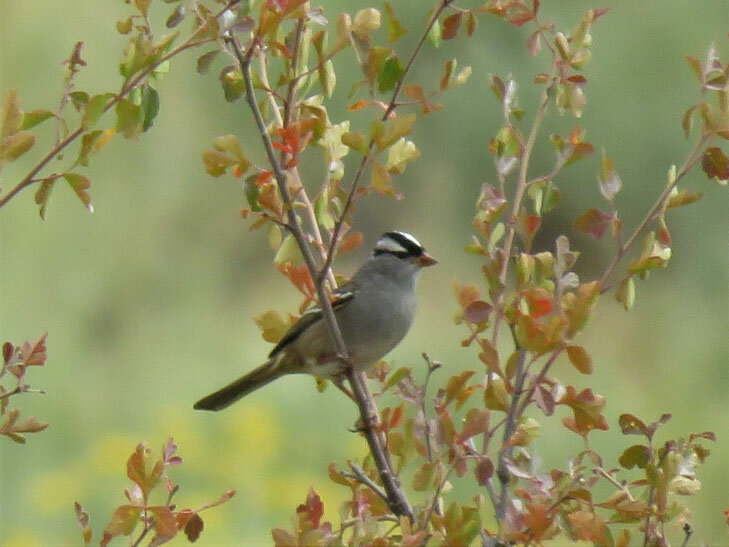
Photo courtesy Charles Martinez
This week’s Bird of the Week, compliments of the Weminuche Audubon Society and Audubon Rockies, is the white-crowned sparrow.
Most birds with “sparrow” in their name leave our area for the winter, but the white-crowned and song sparrows stick around. During different seasons, the white-crowned sparrow visits almost every part of North America. Most breed in the northern areas of Alaska and the Northwest Territories, migrating south to winter across all but the northern areas of the lower United States and into Mexico.
For people beginning to learn bird species identification, the distinctive features of the white-crowned make it a fairly easy sparrow to start with. The chest of this relatively large sparrow is plain gray and its small bill is pale pink or yellow. Adults have the bold black and white head stripes which give this bird its name. In first-year birds, the head stripes are reddish brown.
Male white-crowneds learn their song during the first two to three months of life by listening to the songs of adults in their neighborhood. These sparrows are known to sing year-round, not just during breeding season. In the Arctic where the sun doesn’t set during breeding season, they will sing all night.
In winter these birds mainly eat the seeds of grasses and weeds and some small fruits. Small flocks can be found feeding in thickets, weedy fields, roadsides and even scratching for seed under backyard feeders. They often employ the “double scratch” method of uncovering food in leaf litter.
The wide distribution of this bird has resulted in it being well-studied and used in controlled experiments. Studies conducted during the COVID pandemic shutdowns provided evidence that urban noise causes changes in birdsong.
For information on events, visit www.weminucheaudubon.org and www.facebook.com/weminucheaudubon/.